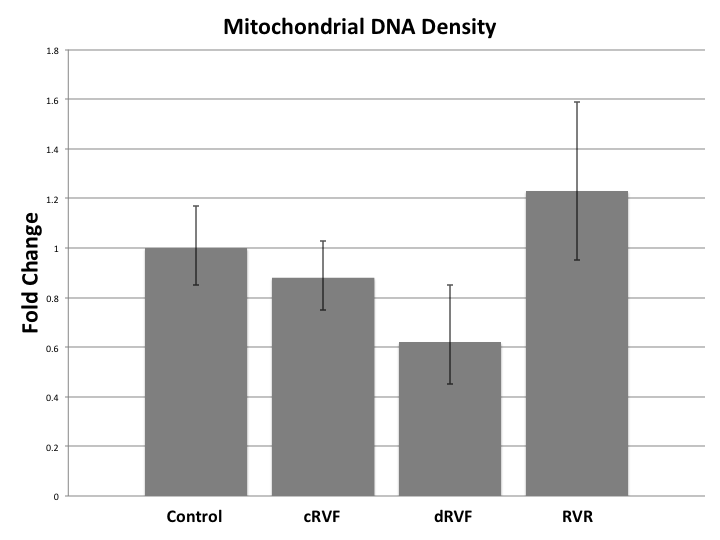J. Winward1, M. E. Bowen1, H. Li1, S. H. McKellar1 1University Of Utah,Cardiothoracic Surgery,Salt Lake City, UT, USA
Introduction:
Increasing evidence indicates that abnormal energy metabolism plays a leading role in right ventricular failure (RVF), but the specific role in RVF and RV recovery (RVR) is unknown. Our analyses showed failed fatty acid oxidation (FAO) and changes in hypoxia markers in RVF and RVR. These observations led us to hypothesize that the buildup of FAO precursors was the result of insufficient mitochondrial (MT) biogenesis. Our objective was to discover how MT biogenesis is altered in RVF and RVR cardiomyoctes compared to healthy controls in a rabbit model.
Methods:
Fifteen rabbits were assigned to one of three groups—control, RVF, and RVR—and RV tissue samples were taken from each rabbit’s RV. MT gene expression and transcriptional variance were measured via RT-PCR and RNA sequencing. Immunoblotting of MT biogenesis activators was also performed.
Results:
MT DNA density decreased during RVF with fold changes of RVF=0.75 (p=0.22) returning to RVR=1.06 (p=0.84). Further division of the RVF group into compensated RVF (cRVF) and decompensated RVF (dRVF) revealed that MT density was qualitatively greater in cRVF (FC=0.88, p=0.58) than in dRVF (FC=0.62, p=0.26). RNA sequencing revealed significantly increased transcription of HIF in RVF when compared to the control (FC=0.93; p<0.04) and RVR (FC=0.90; p<0.03). However, the rate of transcription of downstream activators of MT biogenesis (i.e. PGC-1-α, NRF-1, NRF-2, Akt3, Perm-1, TFAM, VEGF, and AMPK) was not significantly altered between the groups. Despite its unaltered transcription, immunoblotting of activated AMPK revealed a significant fold increase in RVF (1.50) and RVR (1.61) compared to the control (1.06) (p=0.01).
Conclusion:
Our data qualitatively suggest that MT DNA density decreases in a manner directly proportion to the severity of RVF, and that it increases in RVR. Other studies show similar findings in human subjects. Additionally, the increased transcription of HIF in the RVF samples leads us to hypothesize that hypoxia plays a significant role in the MT pathogenesis of RVF. The discrepancy between the rate of transcription and the enzyme activation of AMPK, in conjunction with the altered MT DNA density in RVF and RVR despite the unchanged rate of transcription of upstream MT biogenesis regulatory enzymes, leads us to hypothesize that the functionality rather than the quantity of MT biogenesis regulators is leading to the variance in MT DNA density, as seen with the increased levels of the activated AMPK protein in RVF and RVR, despite its unaltered rates of transcription. Further research investigating the alterations of MT biogenesis markers at the transcriptional and translational level, and hypoxia’s role therein, is warranted.
